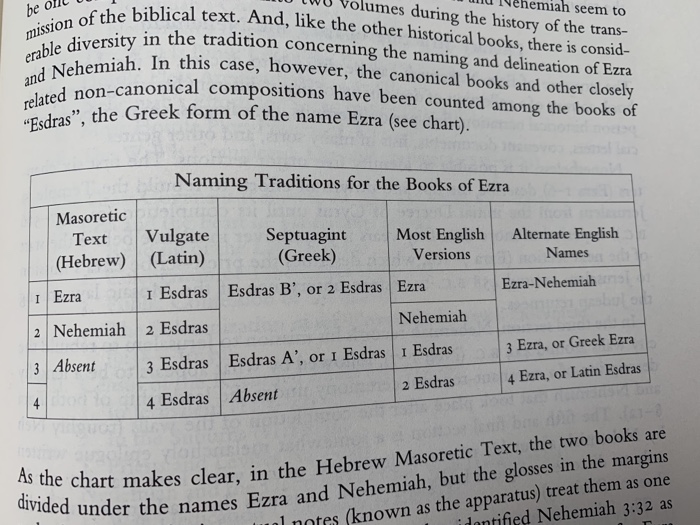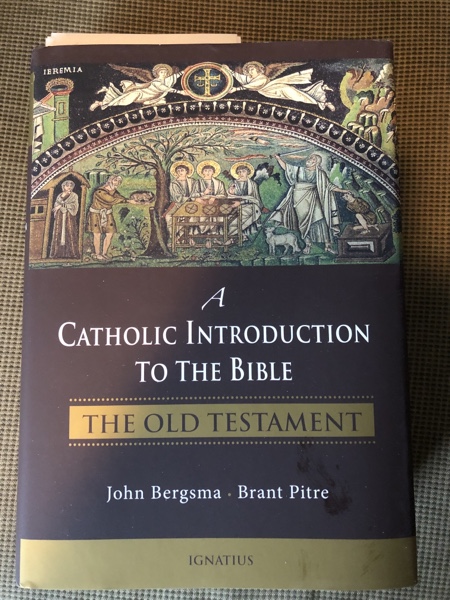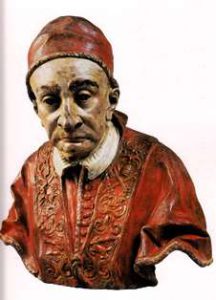Today is the feast of St. Ezra or Esdras, Old Testament scribe.
In the 5th c. BC, the Persian Artaxerxes allowed a scribe named Ezra to return to Jerusalem to restore the Temple worship and the law of Moses. At Jerusalem he finds that the people have fallen into pagan practices. Some years later, Nehemiah will go to Jerusalem.
 Some of you may not know that Holy Church considers many Old Testament figures to be saints. You can find them commemorated in the pages of the Martyrologium Romanum. Today, we have…
Some of you may not know that Holy Church considers many Old Testament figures to be saints. You can find them commemorated in the pages of the Martyrologium Romanum. Today, we have…
2. Commemoratio santi Esdrae, sacerdotis et scribae, qui, tempore Artaxerxis regis Persarum, Babylone in Iudaeam rediens populum dispersum congregavit et omni studio enisus est, ut legem Domini investigaret, impleret et doceret in Israel.
You can give us your own perfect but still smooth and elegant version in English.
Here is a pic from A Catholic Introduction to the Bible: The Old Testament by John Bergsma and Brant Pitre published by Ignatius Press. It shows the variant divisions of books, across the different versions. As you can see, it’s complicated.

NB: I warmly recommend this book, especially to my fellow priests.

Speaking of Artaxerxes…
I can’t help but mention one of the more enlightening but weirdest baroque operas I have ever seen, Artaserse by Leonardo Vinci after a libretto by Metastasio. It premiered in Rome in 1730 in a theater on the famous Via Margutta.
In those days, women were forbidden on the stage, and so male sopranos and castrati, also en travesti, sang the roles.
Now for the weird. (If that wasn’t strange enough.)

There was a production of Artaserse in 2012 with an all male cast, of countertenors.
It was an odd thing to watch, since the artistic approach seemed to blend in support aspects of Japanese Noh theater! This is reflected in makeup and the fact that you see the stagehands in black, as if they are “invisible” and you are taken out of the stage and into the wings, which becomes part of the stage as a result. US HERE – UK HERE
It is hard to imagine that a male, human voice can do some of these things.
 You have to imagine an over-the-top baroque theater in Rome in the early 18th century, full of people with wigs and snuff boxes, perhaps wearing cloaks and masks.
You have to imagine an over-the-top baroque theater in Rome in the early 18th century, full of people with wigs and snuff boxes, perhaps wearing cloaks and masks.
The opera premiered during carnovale on 4 Feb 1730.
The old Benedict XIII, Orsini, – instantly recognizable – once a Dominican friar, would die on 21 February. (Probably not because of this opera… but who knows?)
Benedict XIII had dedicated the Spanish Steps built by the French as a gift to the city (and their own glory). He was a terrible ruler as Pope, who allowed a corrupt cardinal to run amok, later excommunicated by Clement XII. Benedict’s cause has been opened and closed and opened several times, including in 2017! We’ve seen really bad Popes…. haven’t we.
Try to get your mind around the fact that, in 1730, these singers, especially the famous castrati, were fanatically acclaimed, even more than great rock stars of our day. People went nuts for them. Composers, such as Handel, wrote operas around their voices, to showcase them.
Here’s Franco Fagioli… yes, you read that right… with “Vo solcando un mar crud”. Note the Noh!
Artaxerxes… Ezra… Artaserse… Fagioli. That’s how we got here.


































“Commemoration of the holy Esdras, sacrator and scribe, who, at the time of the Artaxerxes the Shah, returned from Babylon and gathered the people once dispersed into Judea , endeavoring with all effort to learn, to practice, and to teach the law in Israel.”
I can’t bring myself to sacrifice the alliteration. I can’t find a nice germanic sounding equivalent to either “priest” or “scribe” that I can get away with. But perhaps the average pew dweller would do well to have some horribly daunting demonstrations of imported idiom. The etymological edification that results from unrepentantly unusual verbal vividly might result in dramatically deeper distinctions, disambiguations, and delectation in the divine demonstrations of our common creed.
Perhaps.
Father, for your further enjoyment, here is another recording of “Va solcando”, this one by counter-tenor Bejun Mehta and the Akademie für alte Musik Berlin on period instruments, conducted by René Jacobs – arguably an even better performance. https://www.youtube.com/watch?v=QJIJUt7NtbM
The great cathedral choirs of the world (a category that emphatically does not include the choir of the Vatican Basilica di San Pietro) – and their great collegiate counterparts at Oxford and Cambridge – have counter-tenors singing the alto parts, as they have for centuries (hence “alto”, the “high” male voice). Here’s a funny countertenor story. Sir David Willcocks, for years the organist-choirmaster at King’s College Cambridge, which was then generally acknowledged as the world’s greatest choir, after his retirement led a spectacular choral clinic at the University of Maryland- College Park. He was guest of honor at a dinner at the home of my major professor Dr. Paul Traver, attended by University of Maryland notables. The table talk turned to a recent University scandal involving padding the grades of University basketball stars so that they wouldn’t lose their academic eligibility to play. Someone asked Sir David if such ever happened at Cambridge. He replied, “well, yes . . . but there it involves counter-tenors.” :)
The commemoration of Holy Ezra, priest and scribe, who, in the time of Artaxerxis king of the Persians, corralled the dispersed people into Judea while returning from Babylon and strove with all zeal, so that he discovered, fulfilled, and taught the law of the Lord in Israel.
I grew up thinking Esdras was a woman, something like Esther’s cousin. Until I began to study Theology.
Many thanks, David, for introducing me to the splendid recording of JC Bach’s Artaserse (1760). Til now I was acquainted with only of that composed by Leonardo Vinci (1730) as described herein by Father Z. It was to be the last of Vinci’s 40 operas as he died not long thereafter at only 40 years of age. Georg Predota speculates (ref: https://interlude.hk/leonardo-vinci-death-by-hot-chocolate/) that Vinci may have been poisoned , but I have not seen anything of a scholarly bent supporting that theory. Thanks also for describing Sir David’s visit to Maryland and his wonderful reply!